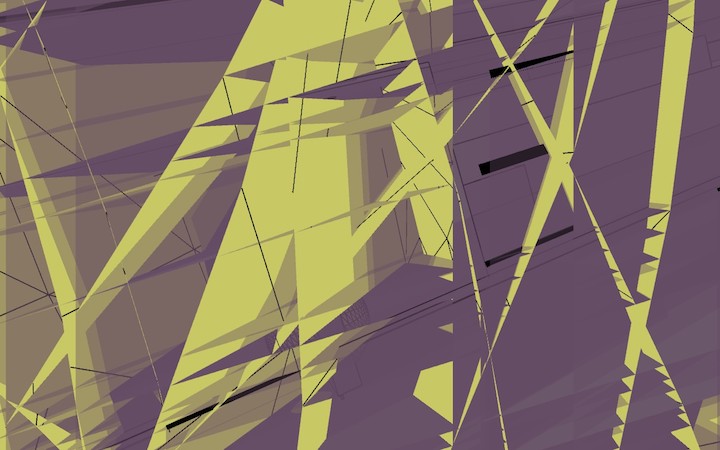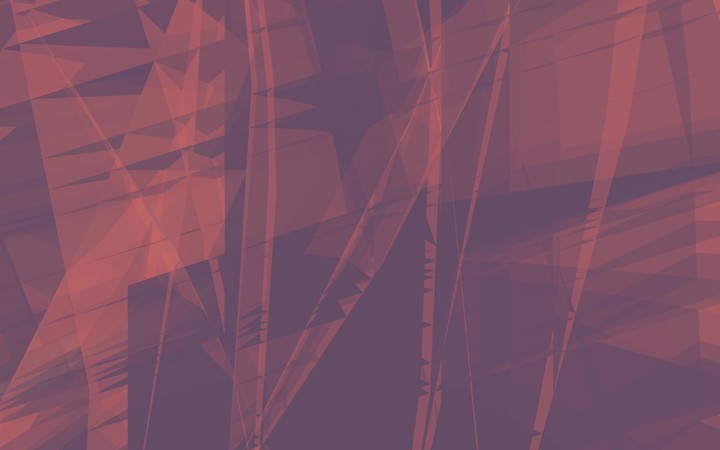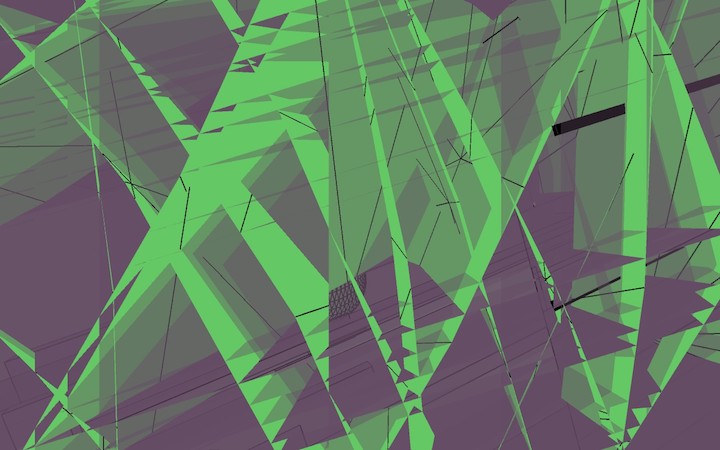Landscape
This is a generative art print created by randomly generating a number of designs and then choosing the suitable one that best represented by aesthetic interests.
produced by: Gaytri Geeta Roopnarine
Introduction
The work contrasts the inner and outer space of an architectural setting and points to a narrative where abstract shapes are beginning to take a life of their own.
Concept and background research
At the centre of the process of creating this work is an algorithm, a method of precise instruction that the computer follows in order to generate the image.
Andrew Goffey in ‘Software Studies” asks the question whether the algorithm is merely the set of instructions (an effective process according to Turing) fed into a machine to solve a problem. In Generative Art, the algorithm goes a step further. It solves a problem but it also includes a narrative about the human condition, the state of the world or other issues that a designer might have in mind. It also shows that a randomly generated set of designs that exhibit a large set of properties, some differing radically from others.
This work was influenced by the idea of architectural space which creates pockets of inner space where faint drawings show from the darkness, creating world which are about emerge. It is influenced by the thinking and process of Le Corbusier with regard to his freedom of thought and boldness in exploiting ‘brut beton’ as analogue of natural stone. Le Corbusier placed systems of harmony and proportion at he centre of his design philosophy and his faith in the mathematical order of the universe was closely bound to the golden section and the Fibonacci series.(wikipedia). This idea is also central to the design process used in this work.
Future development
This work could be further developed by using a wider range of inputs and creating other randomly generated designs. These designs are very graphically oriented so can be easily adapted to creation of three dimensional installations or even fabric or other designs.
Technical
This sketch is based on template by Lior Ben Gai. It uses P3D, a 3D renderer and PeasyCam, a library by Jonathan Feinburg and Thomas Diewald that provides a mouse driven camera. It uses the Processing program developed by Casey Reas and Ben Fry.
This work is based on abstract architectural shapes. It uses the variables of position, size and rotation to create a work that that plays with the levels of space. It was found that a large number of position, rotation and size variables were needed together with great amount of iterations in order to move towards the effect that I wanted. Rotation were a fraction of PI and the dimensions of the box and sphere used were also based on the fractions of the size variable in order to add complexity.
I also experimented with various colours and found in the end that one colour would more effectively reveal the narrative than using a number of different colours. The colour green and its variations in terms of light and shade was effective in highlighting the movement and flow of the design elements
This was a two step process of design. The first step was the generation of a large number of random designs. In the second step, the choice of a particular design was crucial and attention was placed on figure and ground, the shape and size of the empty space as compared to the ‘positive’ shapes, the flow of movement around the work and whether a narrative was beginning to appear as many of the designs were interesting but did not create a narrative, a sense that there was more happening or that one of the shapes were about to do something unexpected. This particular design was chosen from about fifty randomly generated designs.
The challenge was to get an interesting design that had a narrative.
Self evaluation
I would have liked to have created this algorithm from basics and not be dependent to such an extent on the templates created by other designers so this is one aspect of the my work that I need to pay close attention to. However the final results were completely transformed and bore no resemblance to the initial starting process of the template,and generally I am satisfied by the results.
References
This sketch is based on template by Lior Ben Gai. It uses P3D, a 3D renderer and PeasyCam, a library by Jonathan Feinburg and Thomas Diewald that provides a mouse driven camera. It uses the Processing program developed by Casey Reas and Ben Fry.
References:
Andrew Goffey in ‘Software Studies”, edited by Matthew Fuller, 2006, MIT Press Cambridge
https://en.wikipedia.org/wiki/Le_Corbusier

































































